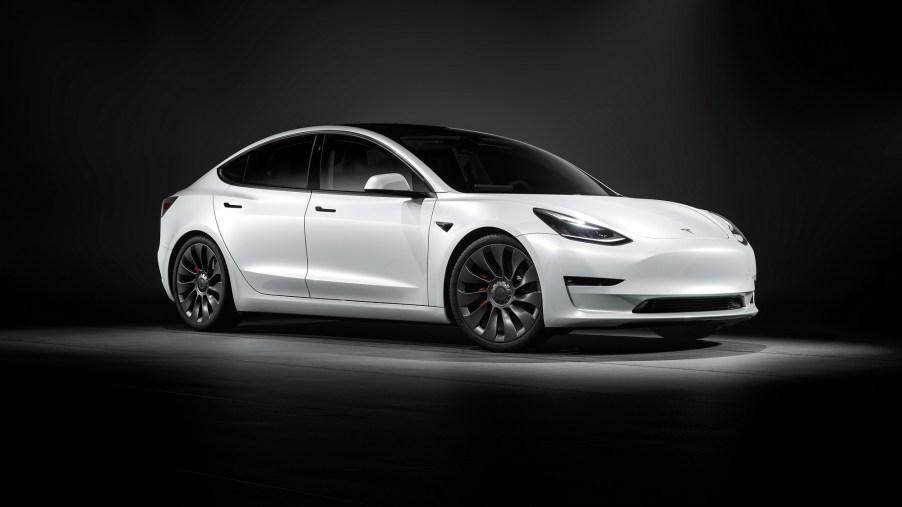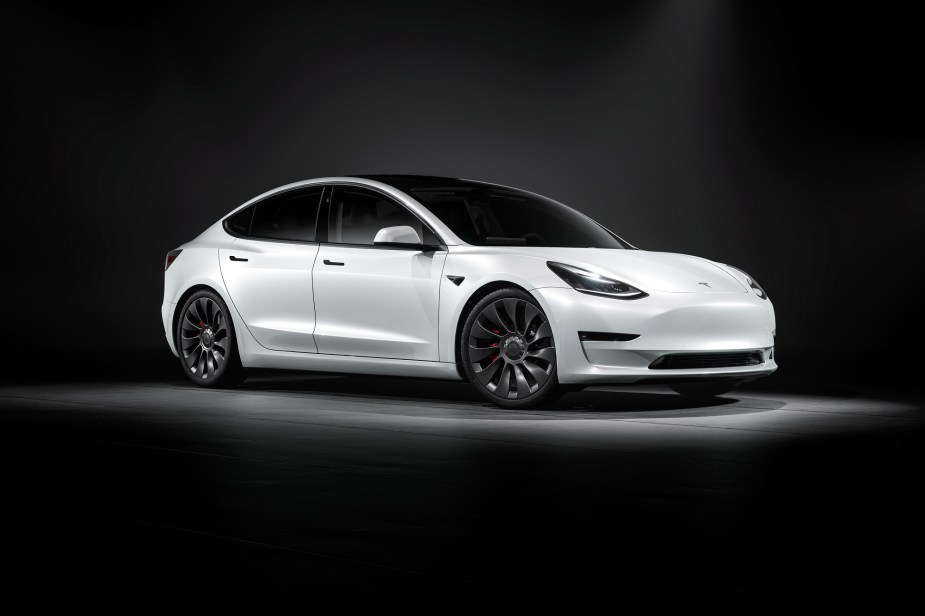
Tesla Model 3 Depreciates Unlike Any Other EV
The Tesla Model 3 delights shoppers with two trims featuring either long-range or silly electric vehicle (EV) performance. On top of that, the vehicle safety testing agencies gave the Model 3 glowing reviews, especially in its top-tier rollover protection. However, there is another way that the baby Tesla is conquering the competition: depreciation. The Tesla Model 3 depreciates far less than any other EV on the market.
How quickly does a Tesla Model 3 depreciate?
The Tesla Model 3 depreciates only 10.2% of its original value within the first three years, according to a study by iSeeCars. That is unheard of among EVs. However, that does mean that used EV shoppers interested in this car will only save an average of $4,720 over a new model. Still, it’s excellent news for current Model 3 owners, especially those considering selling or trading in their EVs.

Which Tesla depreciates the least?
With a three-year depreciation percentage of just 10.2, the Model 3 is the least depreciating Tesla. Next, the Model X depreciates an average of 33.9% in the three-year window. Also, according to iSeeCars, the Model S depreciates 36.3% of its original value over the same timeframe. Still, the Model S and X depreciate well under the EV three-year average of 52.0%.
Do Teslas depreciate quickly?
Teslas don’t uniquely depreciate faster than other EVs. Instead of the seemingly rapid depreciation of the Model S and X being a Tesla-specific issue, it’s an industry issue. According to Gear and Cylinder, EVs need to bolster popularity to stem the tide of depreciation. Once the cars become more ubiquitous, they will depreciate less and become more of a normalized vehicle choice.

However, it should be noted that Tesla does an excellent job of value retention among EVs. Tesla models typically depreciate less than the EV average. Furthermore, the automaker’s electric products tend to depreciate more like conventional gas-powered vehicles, which depreciate on average by around 39% in three years.
Why does the Tesla Model 3 depreciate slowly?
The Tesla Model 3 defies depreciation averages through popularity and demand. The EV automaker’s cars are a desirable commodity, which shows in the vehicles’ value retention. Furthermore, the lower price point of a Model 3 provides an attainable Tesla and drives up popularity. Finally, iSeeCars reports that the over-the-air update architecture in Tesla cars keeps older models up-to-date, and consumers like that feature.

Should you sell your Tesla Model 3?
Before you look at the Tesla Model 3 depreciation figures and decide to sell your beloved EV, you should consider a few things. First, if you plan on replacing your Tesla with a newer model year of the same car, you don’t stand to save very much. Next, even Tesla has been feeling the troubles of the material shortages and supply chain issues. As a result, getting a replacement or upgrade might be more complicated than you think.
Still, Gear and Cylinder says that popularity breeds value retention. So it makes sense that as the vehicles gain popularity, other EVs like the Model S and Model X will hold more value. If you’re feeling like an upgrade, you might want to consider it! Scroll down to the following article to read more about the Tesla Model 3.



